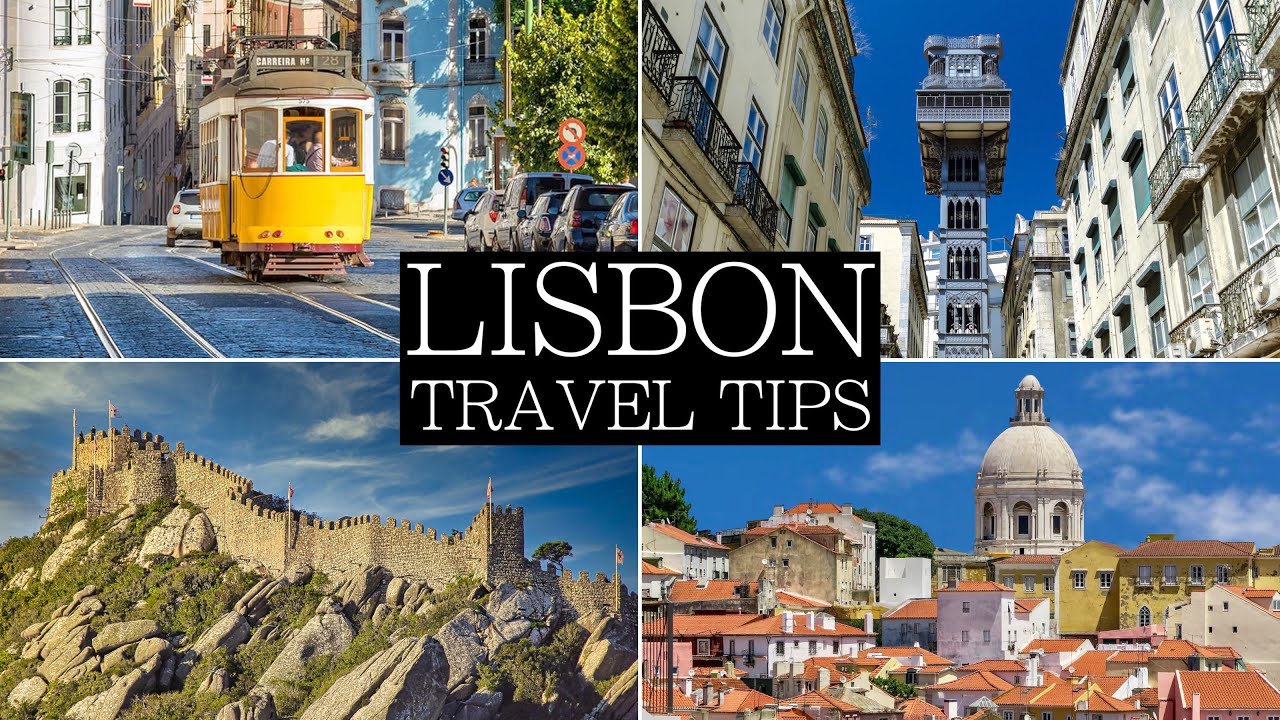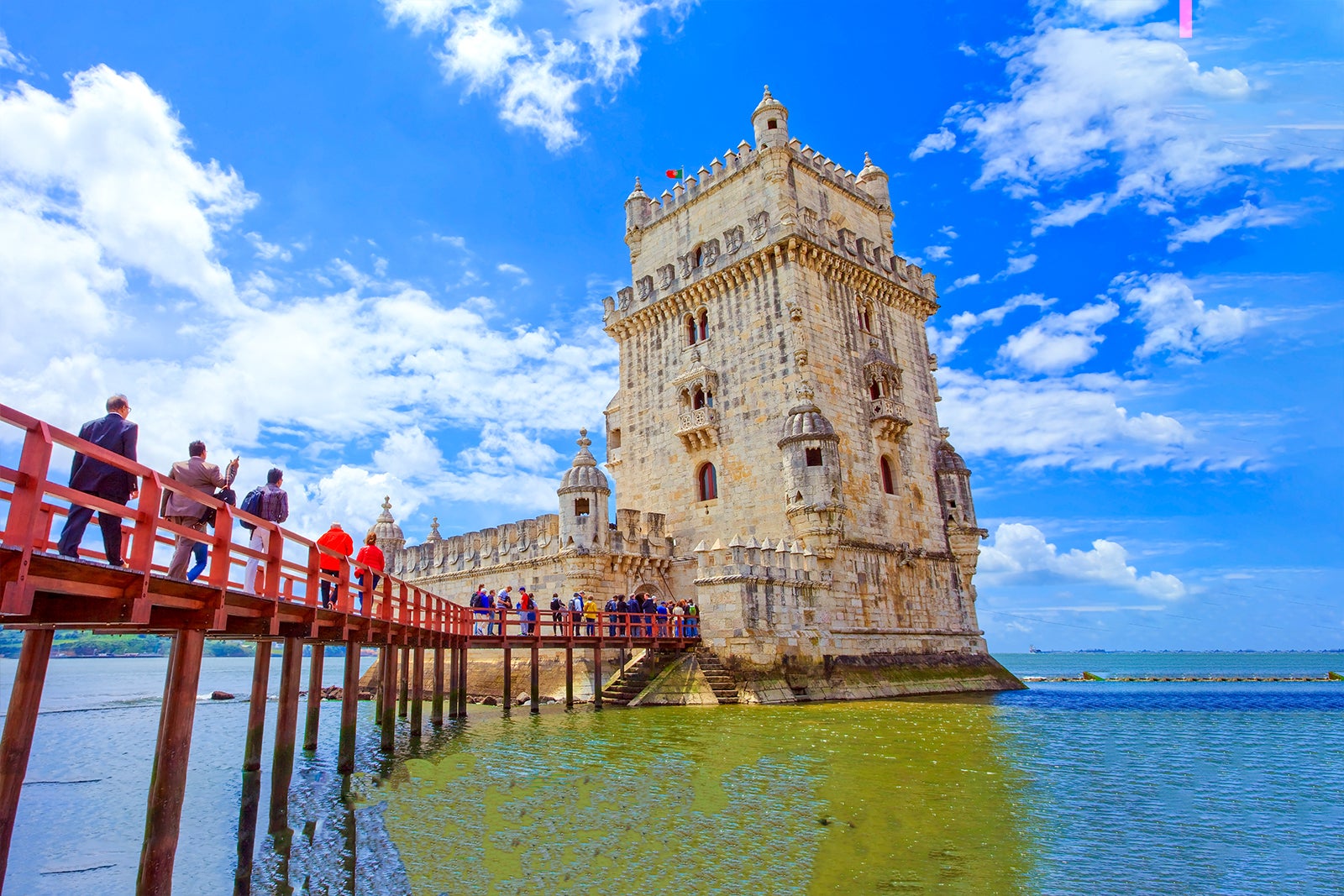
Lisbon, the sun-drenched capital of Portugal, is a city that whispers tales of seafaring explorers, echoes with the melancholic strains of Fado, and dazzles with its vibrant tiled facades. Perched regally on the banks of the Tagus River, this city of seven hills offers a captivating blend of ancient charm and contemporary buzz, making it an irresistible destination for travelers seeking history, culture, delicious food, and breathtaking views. Embarking on a journey to Lisbon is an adventure in itself, promising an unforgettable experience that will linger long after you depart.
A Tapestry Woven Through Time: Lisbon’s Rich History
Lisbon’s story is as old as Europe itself, with evidence of human settlement dating back millennia. Its strategic location at the mouth of the Tagus River made it a prized possession for various empires. The Phoenicians, Romans, Visigoths, and Moors all left their indelible mark on the city, contributing to its diverse architectural styles and cultural heritage.

Related Articles about Lisbon: A Journey Through the City of Seven Hills:
- Lima: A Culinary and Cultural Kaleidoscope – Your Ultimate Travel Guide
- Whispers of the Incas: Your Definitive Travel Guide to Machu Picchu
- Georgia on Your Mind: A Comprehensive Guide to the Peach State’s Wonders
- Ukraine: A Land of History, Culture, and Undiscovered Beauty
- The Lion City’s Crown Jewels: A Comprehensive Guide to Singapore’s Top Attractions
The Golden Age of Portuguese exploration, beginning in the 15th century, propelled Lisbon to global prominence. It was from these shores that navigators like Vasco da Gama set sail, discovering new sea routes to India and opening up trade with the East. This era of immense wealth and influence is beautifully preserved in the UNESCO World Heritage sites of Belém, where the Jerónimos Monastery and Belém Tower stand as testaments to Portugal’s maritime might.
However, Lisbon’s history is also punctuated by tragedy. The devastating earthquake of 1755, followed by a tsunami and subsequent fires, reduced much of the city to rubble. The Marquis of Pombal, a visionary statesman, spearheaded the reconstruction, laying out the grid-like streets of the Baixa district, a testament to resilience and urban planning. In the 20th century, Lisbon endured periods of dictatorship before embracing democracy in 1974 with the Carnation Revolution, a peaceful transition that ushered in a new era of freedom and cultural resurgence.
Unveiling the Charms: Lisbon’s Top Attractions
Lisbon’s allure lies in its diverse neighborhoods, each with its own distinct personality. Prepare to get lost (in the best way possible) as you explore its labyrinthine streets and discover hidden gems.
-
Belém: The undisputed crown jewel for history buffs.
- Jerónimos Monastery: A masterpiece of Manueline architecture, this magnificent monastery is a UNESCO World Heritage site and the final resting place of Vasco da Gama. Its intricate stonework and soaring cloisters are simply breathtaking.
- Belém Tower: An iconic fortified tower on the Tagus River, this sentinel guarded Lisbon’s harbor for centuries and is another UNESCO gem, symbolizing Portugal’s Age of Discoveries.
- Monument to the Discoveries (Padrão dos Descobrimentos): A striking monument celebrating the Portuguese explorers, featuring a caravel shape and statues of key historical figures.
- Pastéis de Belém: No visit to Belém is complete without indulging in the original and legendary Pastéis de Nata (custard tarts) from this historic bakery. Be prepared for a queue – it’s worth it!

-
Alfama: Lisbon’s oldest district, a charming maze of narrow, winding alleys, whitewashed houses, and hidden courtyards.
- São Jorge Castle (Castelo de São Jorge): Perched atop the highest hill, this ancient Moorish castle offers panoramic views of the city and the Tagus River. Explore its ramparts and soak in the history.
- Lisbon Cathedral (Sé de Lisboa): The city’s oldest church, a Romanesque fortress-like cathedral that has survived earthquakes and witnessed centuries of history.
- Fado Houses: Alfama is the heartland of Fado, the soulful Portuguese music. Experience an authentic Fado performance in one of its intimate taverns for a truly emotional evening.
- Miradouros (Viewpoints): Discover hidden viewpoints like Miradouro das Portas do Sol and Miradouro de Santa Luzia for postcard-perfect panoramas.
-
Baixa: The elegant downtown district, rebuilt after the 1755 earthquake with a grand grid layout.
- Praça do Comércio: A magnificent waterfront square, once the gateway to the city from the sea. Admire the Arco da Rua Augusta and the equestrian statue of King José I.
- Rua Augusta: The bustling pedestrian street lined with shops, cafes, and street performers.
- Santa Justa Lift (Elevador de Santa Justa): An iconic neo-Gothic iron elevator offering stunning views from its top platform.
-
Bairro Alto: Known for its bohemian atmosphere and vibrant nightlife, this district transforms from a quiet residential area by day to a lively hub of bars and restaurants by night.
- Churches and Miradouros: Explore charming churches and hidden viewpoints amidst the lively streets.
-
Chiado: An elegant and sophisticated district, home to theaters, historic cafes, and high-end boutiques.
- Café A Brasileira: A legendary cafe once frequented by literary giants like Fernando Pessoa.
- Teatro Nacional de São Carlos: Lisbon’s opera house.
-
Parque das Nações: A modern district built for Expo ’98, showcasing futuristic architecture.
- Oceanário de Lisboa: One of Europe’s largest aquariums, a captivating experience for all ages.
- Teleférico de Lisboa: A cable car offering scenic views of the Tagus and the modern architecture.
Navigating the City: Transportation in Lisbon
Lisbon’s hilly terrain might seem daunting, but its public transportation system is efficient and makes exploring a breeze.
- Trams: The iconic yellow trams are not just transportation; they are a quintessential Lisbon experience. Tram 28 is particularly famous for its winding route through historic neighborhoods like Alfama and Graça, offering a charmingly bumpy ride.
- Metro: Lisbon has a clean and efficient metro system with four lines, connecting major attractions and neighborhoods.
- Buses: A comprehensive bus network complements the metro, reaching areas not covered by the rail system.
- Funiculars and Elevators: To conquer the steep hills, Lisbon utilizes charming funiculars (like the Ascensor da Bica and Ascensor da Glória) and the iconic Santa Justa Lift.
- Taxis and Ride-Sharing: Taxis are readily available, and ride-sharing services like Uber and Bolt are popular and convenient.
- Walking: For the adventurous and those who love to discover hidden corners, walking is an excellent way to experience Lisbon. Just be prepared for those hills!
Where to Rest Your Head: Accommodation Options
Lisbon offers a diverse range of accommodation to suit every budget and travel style.
- Luxury Hotels: From historic palaces to modern boutique hotels, Lisbon boasts world-class luxury options in prime locations like Chiado, Baixa, and near the waterfront.
- Mid-Range Hotels: You’ll find plenty of comfortable and well-located hotels offering excellent value for money in areas like Avenida da Liberdade, Marquês de Pombal, and the business districts.
- Boutique Hotels: For a more intimate and stylish experience, consider Lisbon’s numerous charming boutique hotels, often found in converted historic buildings in neighborhoods like Alfama and Bairro Alto.
- Hostels: Lisbon has a thriving hostel scene, offering budget-friendly dorms and private rooms, perfect for solo travelers and those looking to socialize. Many are located in vibrant areas with great amenities.
- Apartment Rentals (Airbnb, etc.): Renting an apartment is an excellent option for families or groups, offering more space and the opportunity to experience local living. You can find apartments in almost every neighborhood.
- Guesthouses (Pensões): These are often family-run establishments offering a more personal touch and often at a more affordable price point.
When to Visit: The Best Time to Experience Lisbon
Lisbon enjoys a Mediterranean climate, meaning pleasant temperatures for most of the year.
- Spring (March-May): This is arguably the best time to visit. The weather is mild and sunny, flowers are in bloom, and the crowds are thinner than in the peak summer months. It’s ideal for sightseeing and enjoying outdoor cafes.
- Summer (June-August): Lisbon is warm and lively during summer, with long daylight hours perfect for exploring. However, it can get hot, and the city is at its busiest, meaning higher prices and larger crowds. The coastal breezes can offer some respite.
- Autumn (September-November): Another excellent time to visit. The weather remains pleasant, the summer crowds have dispersed, and the city takes on a beautiful golden hue. Prices tend to be more reasonable.
- Winter (December-February): Lisbon experiences mild winters compared to many other European capitals. While there can be rain, temperatures are generally cool but not freezing. It’s a great time for culture, museums, and enjoying cozy Fado evenings without the tourist throngs. Christmas decorations add a festive charm.
Essential Travel Tips for Lisbon
To make your Lisbon adventure as smooth and enjoyable as possible, keep these tips in mind:
- Wear Comfortable Shoes: Lisbon is a city of hills and cobblestone streets. Prioritize comfort for your feet.
- Embrace the Hills: Don’t shy away from the inclines; they often lead to the most rewarding views. Utilize the public transport options for longer distances.
- Learn a Few Portuguese Phrases: While English is widely spoken in tourist areas, knowing basic greetings like "Olá" (Hello), "Obrigado/Obrigada" (Thank you – male/female), and "Por favor" (Please) will be greatly appreciated.
- Indulge in the Cuisine: Portuguese food is delicious and diverse. Don’t miss out on fresh seafood, bacalhau (codfish dishes), bifanas (pork sandwiches), and of course, the Pastéis de Nata.
- Beware of Pickpockets: Like any major city, be mindful of your belongings, especially in crowded tourist areas and on trams.
- Stay Hydrated: Especially during warmer months, carry a water bottle.
- Purchase a Lisboa Card: If you plan to visit many attractions and use public transport extensively, the Lisboa Card can offer great value by providing free entry to museums and unlimited travel.
- Book Accommodation and Flights in Advance: Especially if you’re traveling during peak season.
- Enjoy the Pace: Lisbon is a city to be savored. Don’t rush your experiences; take your time to soak in the atmosphere.
- Explore Beyond the Tourist Trail: Wander off the beaten path to discover local markets, hidden squares, and authentic neighborhoods.
A City That Captivates the Soul
Lisbon is more than just a collection of landmarks; it’s an experience. It’s the scent of roasted chestnuts on a cool evening, the haunting melody of Fado drifting from an open window, the warmth of the sun on your face as you gaze out at the Tagus. It’s a city that embraces its past while confidently striding into the future, offering a rich tapestry of history, culture, and genuine hospitality. So pack your bags, lace up your comfortable shoes, and prepare to fall in love with the captivating charm of Lisbon. Your journey to the City of Seven Hills awaits.





